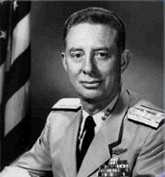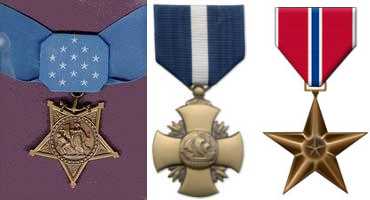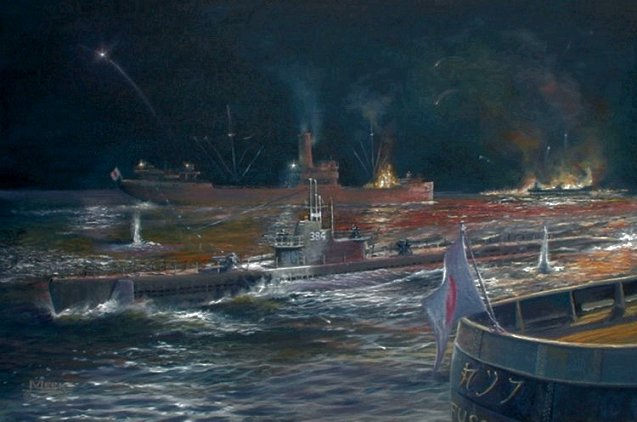Extra reading: And what is a skyhook?” From Eagle1 and Fred Fry International Maritime Monday 93!
——————————————
Here is the new course of Monday Maritime Matters I promised, brought on by non-coincidental coincidence. That led me to a story about sea going vessels that, like the well done “Six Frigates” by Ian Toll, is far more than a story of the Navy; It’s a story of business, shipbuilding, pre-WWII political and economic history, with seamanship on linland waterways tossed in.
 “Fresh Water Submarines” by RADM William T. Nelson.
“Fresh Water Submarines” by RADM William T. Nelson. It came to me when the widow of Capt William J Godfrey, USNR (Ret) (Plankowner on
USS POGY (SS-266)), loaned me some of his files to look through for some first person history for the blog. The book was in the first set of papers she left for me.First off, having now finished the book, it is a story that begins in 1836 with the establishment of shipbuilding on the shores of Lake Michigan by Captain J.V. Edwards, tracing the lineage of the establishment of the
Manitowoc Shipbuilding Company in 1902 (originally named the Manitowoc Drydock Company). From there, the history describes the business strategies of the owners, primarily Mr. Charles West and his continual work to look to the future and keep the business viable.The result? The company remained alive through the Depression, with a skilled workforce, and, when President Roosevelt decided to begin building the Navy up (in FY 1937) from the post-Washington Treaty demise, Mr. West lobbied to build destroyer escorts, figuring they would be small enough to get from the Great Lakes to sea. Recall, at the time, the St Lawrence Seaway was not developed. He kept connected to the Department of the Navy, letting them know he was ready to work and his staff had been busy making the initial plans.So what do you do, when the Navy summons you to DC in early 1941 to give you a contract for building 10
GATO Class submarines? The book tells you.Besides the fact you have never considered building a combat submersible hull, how do you get a vessel that draws more than 9′ of draft from Lake Michigan to the Gulf of Mexico with 21 locks to transit? Oh, yes: You have always launched hulls sideways and no one is sure if a sub hull will be able to be put in the water that way successfully in the narrow water ways around the shipyard.Well, you build it, commission it, train the crew in Lake Michigan, decommission it, load it on a drydock, hook up the tug and send it on it’s way south, around bends, under bridges, stopping on the river banks when necessary (sometimes not intentionally), deliver the boat to New Orleans, reinstall the periscopes and their shears, recommission it, load food, fuel and torpedoes and send the sub to war. That’s the executive summary.
The book is a study in the men, machinery and families who made this happen, covering the excellent foresight of the shipyard owners, who not only built ferries and ore ships, but cranes and specialized shipbuilding machinery to keep the skilled workforce in place, so when this requirement arose, they were up to the challenge, and, as it turned out, were able to deliver the boats faster than Electric Boat! Bonus information includes details of the operations of the river pilots and tow skippers, along with the issues of navigating rivers.
The Navy was so impressed with the early performance, a second contract, for more subs was ordered, before the first sub was built. Toss in the complication that the war had now begun and the strategic imperative took on a entirely new meaning. The story proceeds to tell of the complications of building up a work force, getting skilled labor in place to augment the generational workers already there. Building special jigs to rotate the 9 hull sections to allow welders to work in the best position for the best quality of their beads. Later, a third contract was given to the Manitowoc company, too.
The Navy then tasked, in February 1942, out of the blue, the construction of 450 LCT-5 craft to support amphibious landings. Later, the added requirement came to design and build the LCT-6s. Toss in a contract to build 6000 cranes for the Navy and Army for forward deployment, all as a result of keeping a company positioned and ready to aggressively take on new tasks with great efficiency.
A total of 28 submarines were built, short of the 41 tasked in original contracts, because it became apparent the war was coming to a close. The 28th submarine, the USS MERO (SS-378) wasn’t commissioned in time to reach the war zone and was tasked with conducting a public affairs cruise around the Great Lakes so the people could get a good look at what they had helped to build.
The book discusses, in depth, the specifications of the contracts, the interactions with Electric Boat, the costs and profits, equipment provided, special items and arrangements, and the transit of the USS PETO (SS-265) (the first Manitowoc boat) to the Gulf of Mexico and Panama for combat training. Interaction with the on site SUPSHIP reps and descriptions of the commissioning parties are there, too (complete with commentary reminiscent of my own experience in Pascagoula, MS).
The boats earned a reputation among the crews who took them into combat, and the maintenance units who serviced them as well built hulls, constructed with the understanding sailors lives were at risk.
RADM Nelson completes the story with some excellent analysis of the contract performance, showing specifics of costs, profits and the associated issues in the financial realm.
I highly recommend this book, not because it is a book on submarines, but because it is a wonderful case study of a business that grew and thrived in bad times and good, and when they had to perform, they successfully adapted and exceeded expectations. In the early part of the book, the story of the national mood and decisions regarding the size of the Navy, puts the history of the Navy in context for the time between WWI and II. Some details of the difficulties facing our submariners in the combat theater are also discussed, in the context of how the shipyard managed to re-engineer the dive planes and some other system to allow faster diving times and periscope vibration problems.
The company lives on today, still with it’s hand in the shipbuilding/repair business and building cranes, among other diversified operations, such as a major operation in food service machines. Checking this page, the Manitowoc Company currently has it’s hand in the LCS project, building improved lighterage barges for the Navy and the construction of USCG Great Lakes Icebreakers.
Not only is this book available from Amazon, I also found this site, Submarine Books, that has a lengthy list of books on submarines, old and new!
















